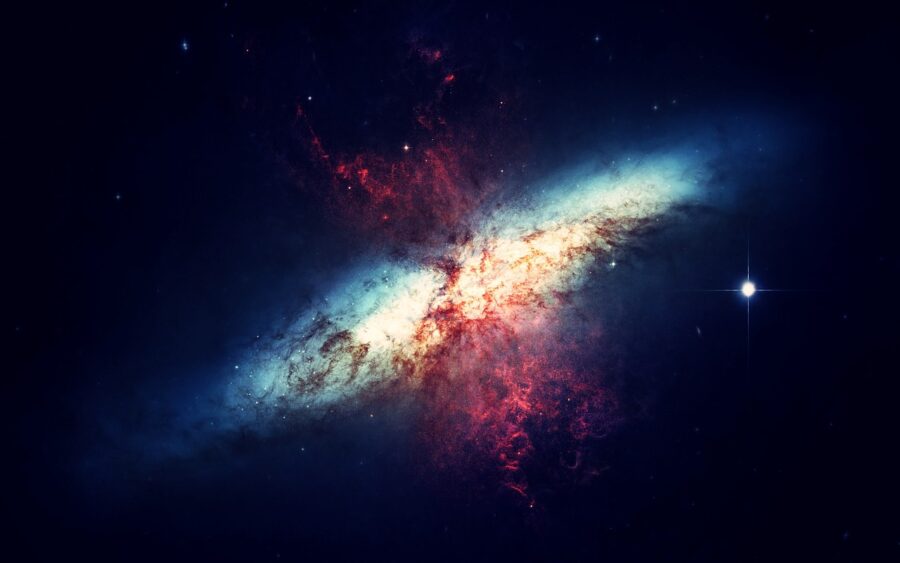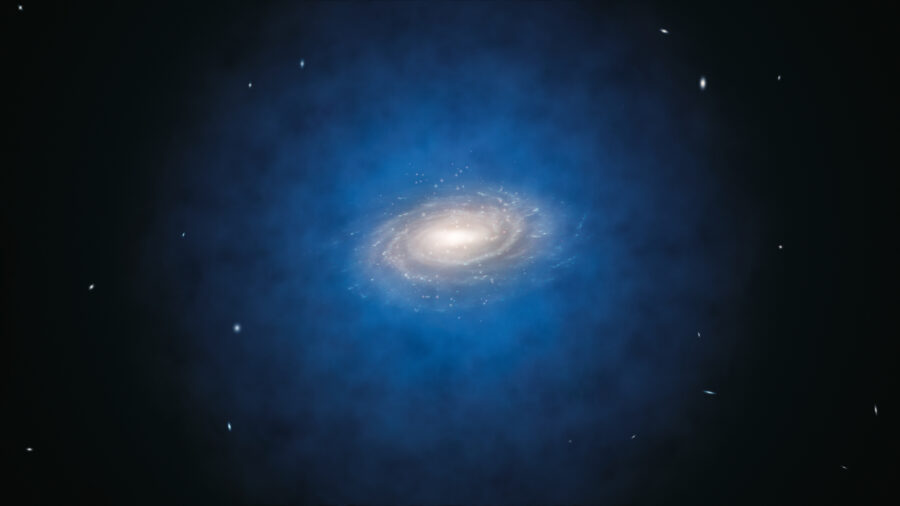Researchers Now Know The Shape Of Our Galaxy And It’s Totally Different Than Originally Thought
It was long thought that the shape of the Milky Way Galaxy branched into four arms, but scientists now believe it's made only of two armed spirals.

Scientists are changing the shape of the galaxy. Or at least their understanding of it. According to a report by Space.com, a team of researchers used data from cutting-edge telescopes and other tools to map the shape of the Milky Way, arriving at the theory that it is a two-armed spiral as opposed to the earlier belief that it had four arms.
The recent study has determined that any given galaxy is likely either elliptical, irregular, or spiral-shaped. Spiral galaxies are the most common, typically with two main arms that branch from the center and separate into smaller arms.
It has long been believed that the Milky Way is an odd exception to this common shape. Scientists previously theorized that our galaxy was a spiral with four main arms that extend from a cluster of stars at the center.

Though many have believed that the Milky Way galaxy is special in this regard, why it takes this unique shape has remained a mystery. New data suggests that the Milky Way may not be so special after all. Astronomers with the Chinese Academy of Sciences housed at the Purple Mountain and National Astronomical Observatories have pored over data from multiple sources to build a new model of the galaxy.
The team measured the distances between about 200 stars in the Milky Way to create a map of the galaxy. They combined that data with measurements from the European Space Agency’s Gaia telescope. They focused the telescope’s readings on over 1,000 galactic clusters and 24,000 OB stars.
These large stars burn hot, bright, and fast, meaning that they move very little during their lifetime and are relatively easy to track. The team measured the stars’ movement in relation to the Earth to help detail their new model of the galaxy. The theory the team arrived at is that the Milky Way has a dense bar running through its center that two main arms branch from.
On the outskirts of the galaxy are fragmented arms not connected to the dense star cluster at its center. These fragmented arms are thought to be the result of galactic collisions deep in the history of the Milky Way. As our galaxy smashed into another, or perhaps several others, fragmentation could have occurred that created the shape scientists are determining now.
The team admits that this new model of the galaxy is not complete. They will continue to add data from other sources and from the ongoing findings of Gaia, which is expected to be active for at least two more years.
The methods that brought the research team to the two-arm spiral model of the Milky Way could change the way scientists approach galaxy modeling across the board. Their process for determining galactic structure is shedding new light on the shape of our own galaxy and could continue to illuminate the mysteries of others, as well.
As scientists continue to unravel the riddles of space, our understanding of the universe and our own galaxy evolves. The quest to map the galaxy is far from complete, but humanity is one step closer to understanding how the shape of our galaxy fits into the puzzle of the cosmos.












